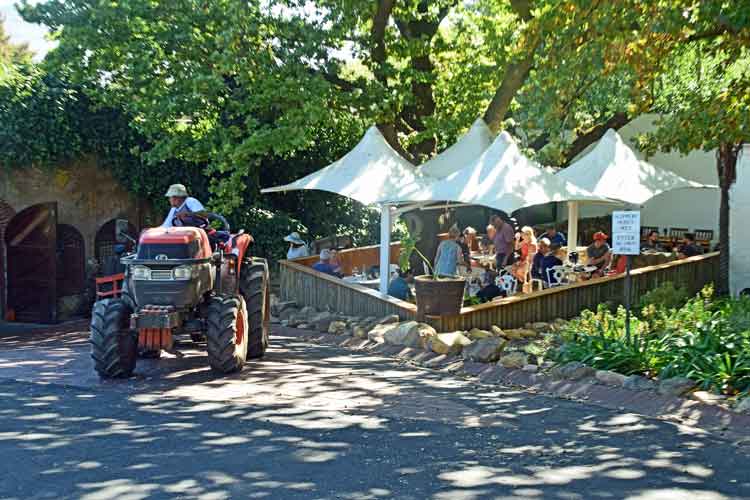We were invited to sample the new menu as Haskell
have reopened the Long Table restaurant. They call it a small plate menu, with
dishes that you can share; they say four per couple would be ample and we agree
Some beautifully carved
furniture was discovered in the cellar, it has been brought up to the
restaurant to display
And is currently being oiled to
preserve the wood and the fine carving
Haskell wine
We began with a glass of the Dabar MCC, which was made by Haskell winemaker Rianie Strydom. It is 60%
Chardonnay and 40% Pinot Noir
Can't you just picture yourself
having lunch in this lovely setting, under the trees with a Stellenbosch valley
stretching out in front of you and the mountains behind
Lots of outdoor seating and
also plenty inside for chillier days
The tasting room
The glass doors close in
inclement weather
More indoor space
Vines turning to autumn colours
as harvest comes to an end
High vineyards, blue mountains
In the kitchen, Head Chef
Charles Joubert and his team work on lunch. He was previously at Terroir restaurant under
acclaimed Chef Mike Broughton. He brings with him a passion for finely crafted
food and a palate attuned to food and wine matching
The media table
Chef Charles comes to tell us
about what we will have for lunch, which will be served family style for us to
help ourselves. A good way to eat when trying out a restaurant’s food
Rianie Strydom, GM and Cellar
master (should that be mistress?) for Haskell Wines. Haskell’s second label
Dombeya wines are also served at the Long Table restaurant. Just back from
ProWein in Germany, she took time off from harvest to be with us
The Chicken liver parfait, with
a red wine marmalade and a fig tart tatin. The parfait was soft and velvety,
not too set, with good iron rich flavours, the pastry on the tart was light flaky
and crumbly and this is one to copy now as figs are in season at last
The ceviché of fishy thinly
sliced Cape Salmon was in a light, slightly shy ginger shallot dressing, it was
topped with crisp fish skin, sesame rice crackers and radishes. Applauded by
those who enjoy fish skin
Tiny warm rolls for the parfait
The delicious salt baked
beetroot served with local goat’s cheese served two ways, creamy and crumbly. A
rich earthy beetroot sorbet and hazelnuts came with a local honey and balsamic
vinaigrette. The slices of heritage candy beetroot lit up the plate. This is a
great combination and also goes very well with a good Sauvignon Blanc like the
Dombeya
Each couple at the table was
served these dishes to share
We were served the 2016 Haskell
Anvil Chardonnay with lunch, and this versatile wine was a very good pairing
for the food. It is lightly wooded, crisp with lemon and limes, and ends with toffee
vanilla wood. The red wine served was the 2014 Dombeya Boulder Road Syrah, rich
red berries, spice and dark licorice wood
Another of the dishes was the
squid and Chorizo, Really crisp battered tentacles, soft rolls of squid and
just a few crisp slices of spicy chorizo below. It came with a squid ink
vinaigrette, deep fried kale, broccoli, baby potatoes and confit onions. One to
return for, again and again...
The pink sous vide belly of
pork is one of the main meat dishes and is topped with grilled pineapple and
pork crackling. Not too fatty, very tender but proper crackling would be nicer
than this airy crisp which has texture but no flavour. Served with a mango
chutney and a fermented chilli sauce
For vegetarians and Lynne, the
dish of the day, light pillows of fried potato gnocchi with a mushroom ketchup,
butternut squash and gorgonzola cream. This is not the only vegetarian dish;
besides the beetroot, they also have a Tomato risotto on the current menu
Dessert was a classic Apple
strudel, well rolled with thin crisp pastry, good spices, topped with a burnt
honey ice cream and a Crème Anglaise foam. We really like Chef Charles' food;
he is not throwing lots of unconnected ingredients at the plate (as so many
chefs are doing at the moment). Everything that is there should be there and
the flavours are clear, right and uncomplicated. And, of course, properly
cooked
© John & Lynne Ford, Adamastor & Bacchus 2018


















































